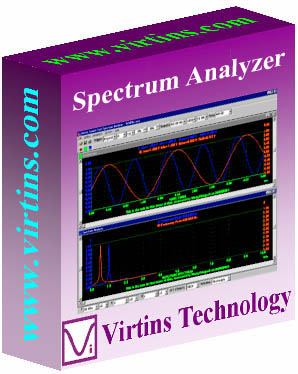
Specifications
1. Seven view types: Real time Amplitude Spectrum, Real time Phase
Spectrum, Real time Auto Correlation Function, Real time Cross
Correlation Function, Real time Coherence
/ Non-Coherence
Function, Real time Transfer
Function / Impedance Analyzer, Real time Impulse Response.
2. Independent X axis and Y
axis zooming and scrolling.
3. In Amplitude Spectrum, Y axis
supports relative modes in linear and dBr scale, and absolute mode in
RMS voltage, dBV, dBu, dB, dBFS scale. X axis supports linear,
logarithmic and octave scale (1/1, 1/3, 1/6, 1/12, 1/24, 1/48, 1/96).
Support amplitude / power spectrum density display. Y axis can be converted to
impedance display.
4. Analysis results can be exported as TXT files.
5. Data
curve can be print-previewed, printed out directly or saved as BMP files.
6. Fast
display refresh rate: about 50 frames per second (tested with a sound
card under Windows XP SP2 on IBM ThinkPad R51 Laptop PC with Intel
Pentium M processor 1.60 GHz, with scan time=10 ms and FFT size=1024 and
both the Oscilloscope and the Spectrum Analyzer running under "Auto"
mode). Thus data are displayed and analyzed in "true" real time.
7. The colors of display, font size, screen refresh rate are
configurable.
8. FFT size can be adjusted from 128 to 4194304
points.
9. Allow record length to be different from FFT size. If
the FFT size is greater than the record length, then zero(s) will be
added at the end of the actual measurement data during FFT computation.
If the FFT size is less than the record length, then the measurement
data will be split into different segments with the size of each segment
equal to the FFT size. Segment overlap percentage can be selected in the
range of
0%~99.9%. The final result will be obtained by averaging the
FFT results from all segments.
10. Support 69 window functions:
Rectangle, Triangle (or Fejer), Hann, Hamming, Blackman, Exact
Blackman, Blackman Harris, Blackman Nuttall, Flat Top, Exponential,
Gaussian, Welch (or Riesz), Cosine, Riemann (or Lanczos), Parzen, Tukey,
Bohman, Poisson, Hann-Poisson, Cauchy, Bartlett-Hann, Kaiser, etc.
11. Display peak frequency with sub-FFT-bin-size accuracy in
Amplitude Spectrum display, second peak time delay and corresponding
coefficient in Auto Correlation Function display, peak time delay and corresponding
coefficient in Cross Correlation Function display, peak frequency and
corresponding coefficient in Coherence Function display, peak frequency
and corresponding gain and phase in Transfer Function display, peak time
and corresponding value in Impulse Response display.
12. Allow
the measurement of Total Harmonic Distortion (THD), THD+Noise (THD+N),
Signal in Noise and Distortion (SINAD), Signal-to-Noise Ratio (SNR) and
Noise Level (NL), Total Non-Coherent Distortion+Noise (TNCD), and GedLee
Metric in a specified frequency range.
13. Allow the
measurement of IMD-SMPTE/DIN, IMD-CCIF2, IMD-CCIF3, DIM, Crosstalk, Bandwidth
(-3dB), Harmonics, Energy in user defined frequency bands, Peaks, Total
Distortion+Noise (TD+N), Wow &
Flutter, sound loudness, loudness level & sharpness & articulation
index.
14. In THD measurement and harmonics analysis, the fundamental frequency can be
detected automatically based on the peak frequency or another variable
such as the RPM reading from a tachometer (e.g. for the purpose of order
tracking). It can also be specified manually.
15. Support one cursor reader and two markers which stick to the
measurement data. Support peak markers.
16. Intra-frame processing includes: Remove DC
Component, Frequency Compensation, Frequency Weighting (flat, A
weighting, B weighting , C weighting, ITU-R 468 weighting), and Smooth
via Moving Average (linear or octave). Frequency compensation is achieved via loading a
user configurable text-based Frequency Compensation File (*.fcf).
17. Four inter-frame processing methods: None, Peak Hold, Linear
Average, Exponential Average. The number of frames (2~200, forever) for
peak hold or linear averaging can be specified. The process can be reset
during runtime if “forever” is chosen.
18. Five chart types: Line,
Scatter, Column, Bar, and Step. Line width is adjustable.
19. Up
to five reference curves can be set for each channel. The reference
curve can be configured by either copying the current curve, or loading
a properly formatted text file or a previously saved reference file from
the hard disk. Reference curves can be assigned as High-High,
High, Low, Low-Low limits.
20. The data in the graph can be copied into the
clipboard as text and later paste into other software such as Microsoft
Excel for further analysis. The image of the graph can be copied into
the clipboard as Bitmap image and later paste into other software such
as Microsoft Word.
21. Supports Multilingual User Interface under
Windows 2000, XP, Vista, 7, 8, 8.1, 10, 11 and above. Currently supported
languages are English, French, German, Italian, Portuguese, Spanish,
Russian, Simplified Chinese, Traditional Chinese, Japanese and Korean.
Examples
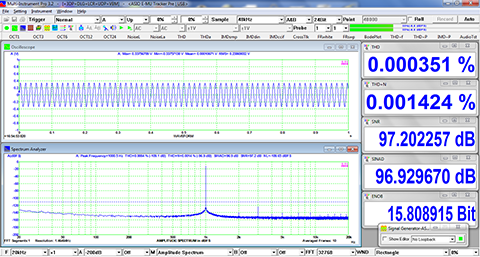
Measurement of THD, THD+N, SNR, SINAD, ENOB...
|
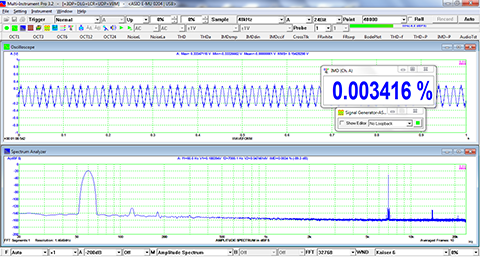
Measurement of IMD (SMPTE)
|
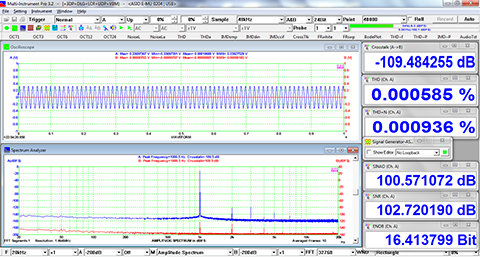
Measurement of Crosstalk
|
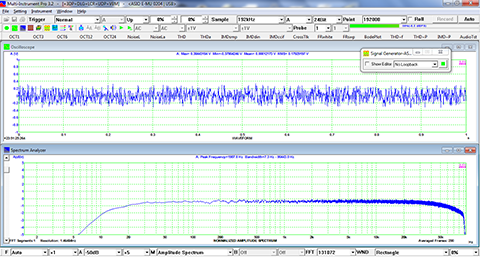
Measurement of Frequency Response (white noise stimulation)
|
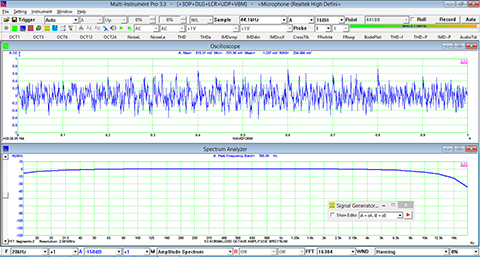
Fast Measurement of Frequency Response (multi-tone stimulation)
|
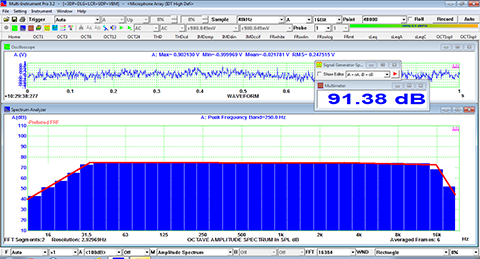
Measurement of Frequency Response (pink noise stimulation + octave
analysis)
|
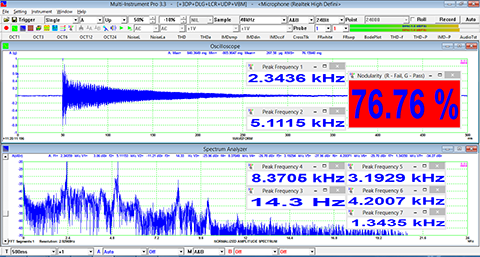
Impact Test
|
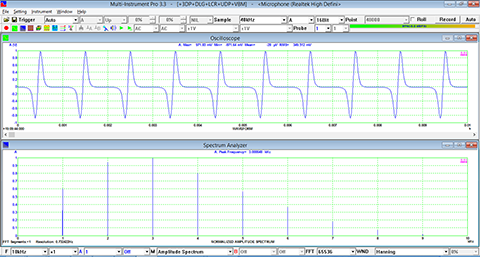
Normalized Amplitude Spectrum of a Signal
|
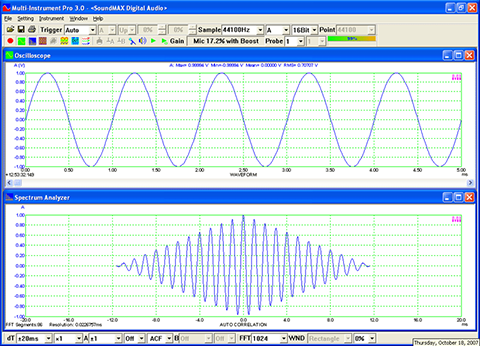
Auto Correlation of a Sinewave
|
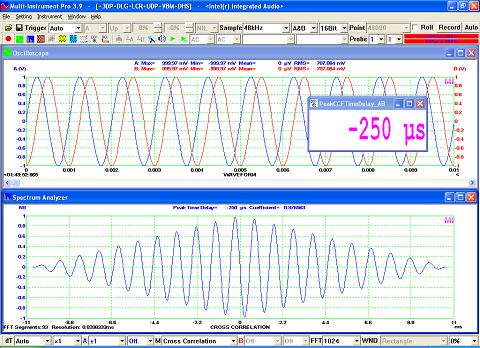
Cross Correlation of a Sinewave and Its Phase Shifted Copy
|
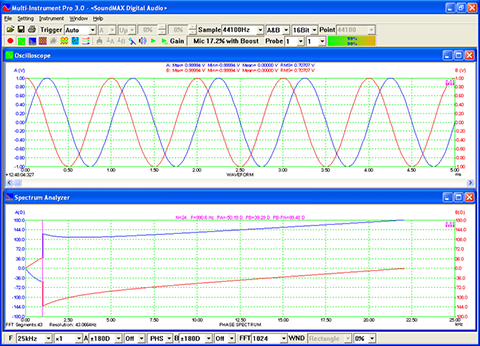
Phase Spectrum of a Sinewave and Its Phase Shifted Copy
|
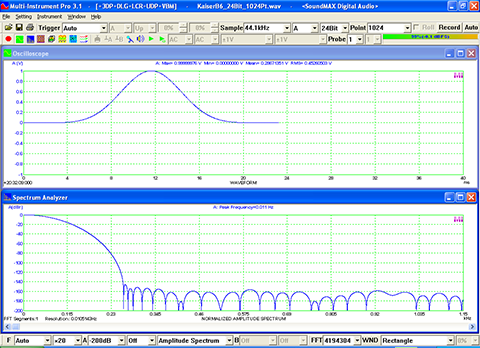
Spectrum of Kaiser 6 Window Function
|
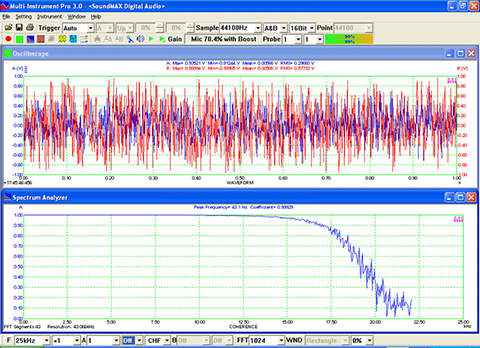
Measurement of
Coherence Function between Output and Input (white noise
stimulation)
|
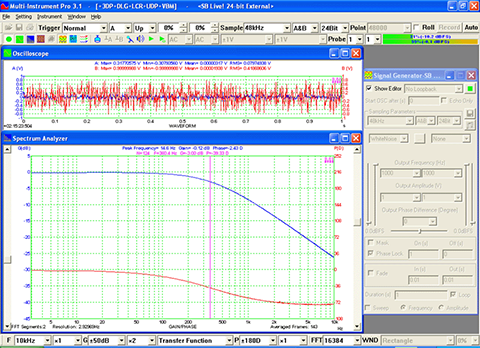
Bode Plot measured via Dual Channel FFT (white noise
stimulation)
|
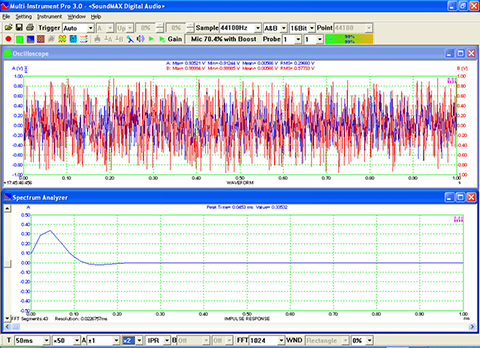
Impulse Response measured via Dual-Channel FFT (white noise
stimulation)
|
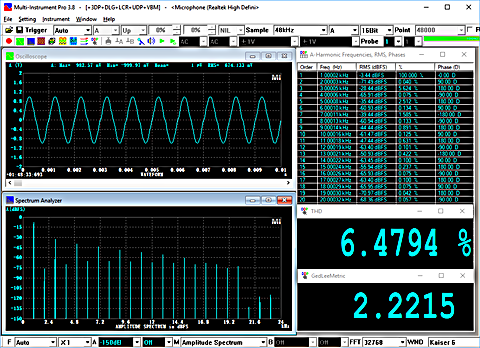
GedLee Metric for Perception Based Nonlinear Distortion
Measurement
|
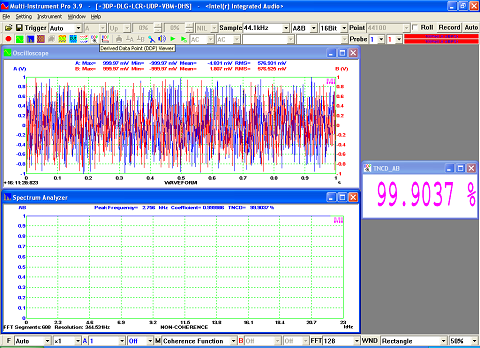
Measurement of Total Non Coherent Distortion + Noise (two
independent white noises)
|
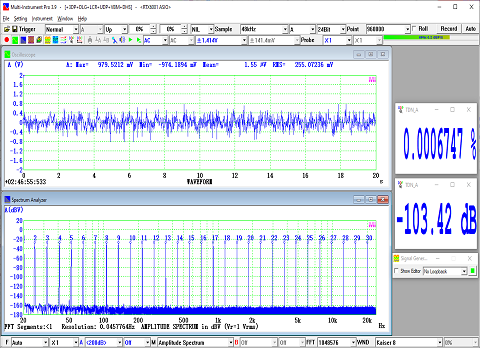
Measurement of Total Distortion + Noise (multitone stimulation)
|
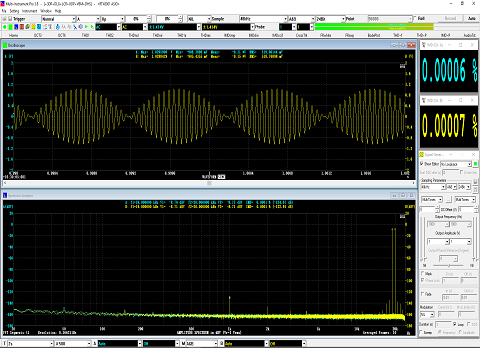
Measurement of
IMD (CCIF2)
|
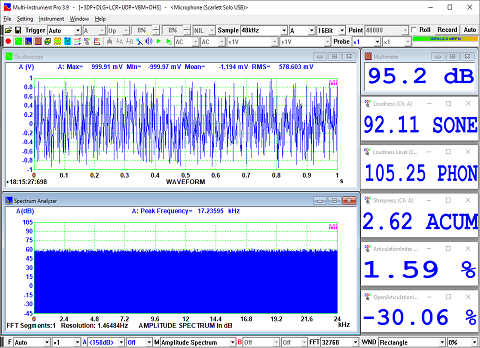
Sound Quality (Loundness, Loundness Level, Sharpness,
Articulation Index) measurement
|
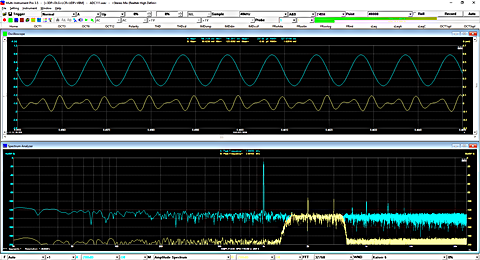
Comparison between a distorted sine wave and its 2nd & 3rd
harmonics residual
(obtained by a 1022-order band-pass FIR
digital filter)
|
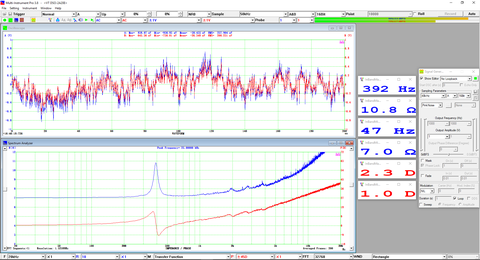
Impedance & Phase vs Frequency of a Speaker (pink noise stimulation)
|
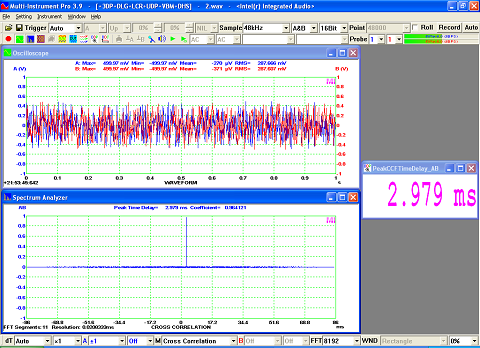
Time Delay Measurement using Cross Correlation (white noise
stimulation)
|
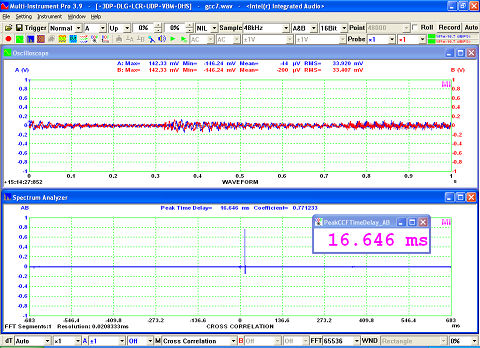
Time Delay Measurement using Generalized Cross Correlation
(music stimulation)
|
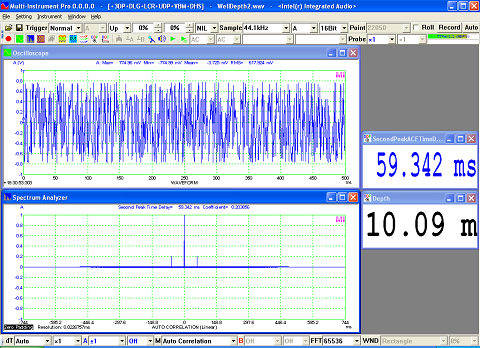
Time Delay and Well depth Measurement using Auto Correlation (MLS
stimulation)
|
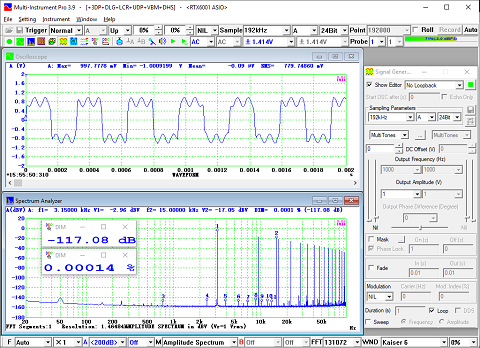
Dynamic Intermodulation (DIM) Distortion Measurement
|
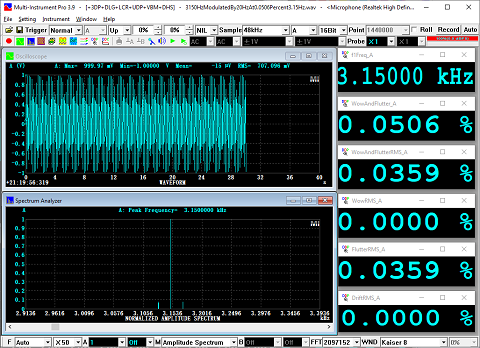
Wow & Flutter Measurement
|
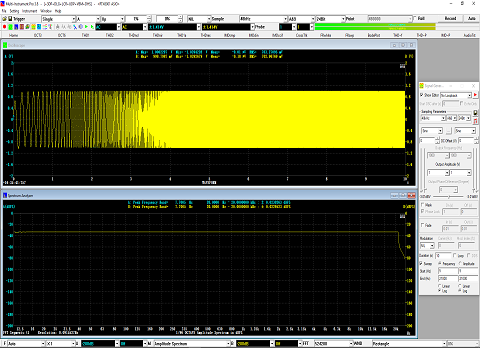
Measurement of Frequency Response (logarithmic sweep + octave
analysis)
|
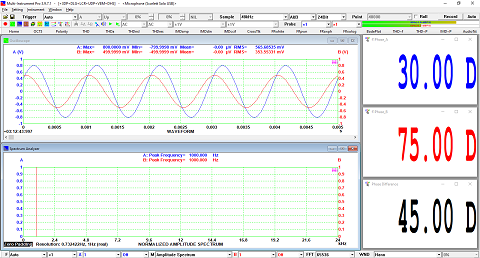
Measurement of
Phase Difference between Two Sinewaves
|
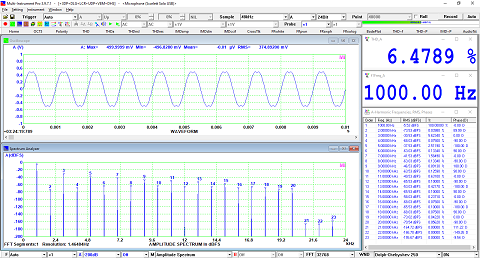
Harmonic Analysis and Signal Decomposition
|
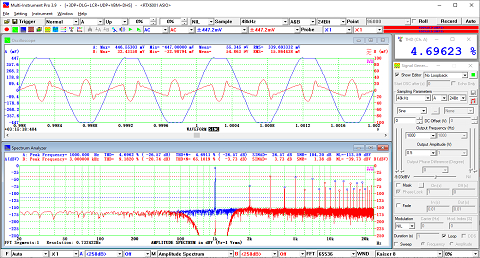
Comparison between a sine wave with clipping distortion and its
distortion residual
(fundamental removed by a 1022-order band-stop FIR
digital filter)
|
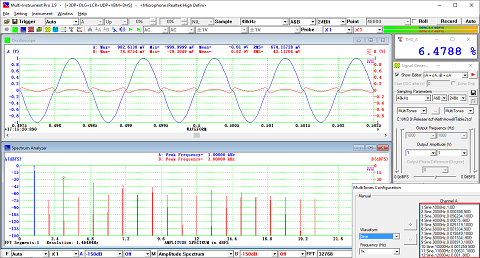
Comparison between a sine wave with crossover distortion and its
distortion residual
(Simulated, fundamental removed by a
1022-order band-stop FIR digital filter)
|
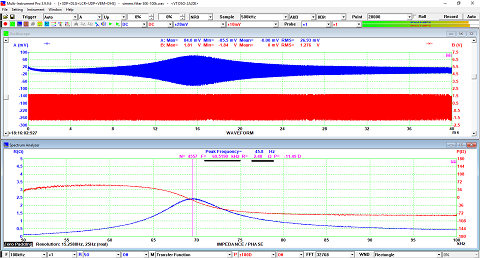
Impedance & Phase vs Frequency of a filter using swept sine from
50kHz to 100kHz with DSO-2A20E |
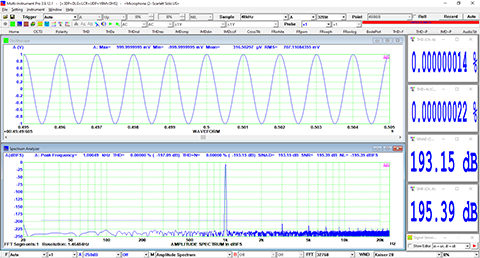
Measurement of THD, THD+N, SNR, SINAD, ENOB of a 1kHz Sinewave Generated Digitally Through the MultiTone Function with No Spectral Leakage
|
|